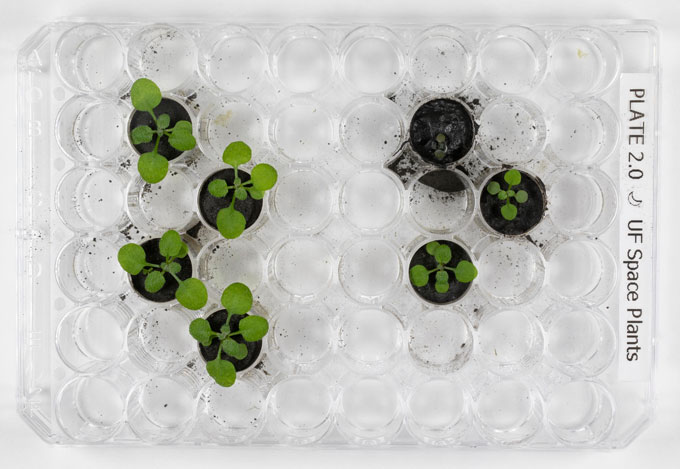When the new Artemis program begins sending people back to the Moon, there are going to be challenges.
One of the biggest is going to be food.
Currently on the International Space Station (ISS), the crew gets groceries sent every few weeks—not too difficult to do when the ISS is only six hours away by rocket. Though this is still possible for a lunar station, the Moon is much further away. It would be great if a lunar crew was able to grow at least some of their own food.
Is this possible?
On the ISS, astronauts have been successfully growing all sorts of plants for years in microgravity (meaning almost no gravity). Using water, nutrients, and specially designed lamps, this system is great news for the future of Artemis. But there is another question to ask about a potential lunar garden.
Could we grow plants in Moon dirt?
Now, a new experiment has proven that we can. Wow! But it wasn't easy to do.
Dirty work
Can plants grow in this stuff? (Getty Embed)
There are plenty of reasons why plants can't grow naturally on the Moon, the biggest one being that there's no atmosphere. This means no rain, no carbon dioxide, wild temperature swings, and no protection from powerful solar radiation. But those conditions were not what this experiment was about.
Instead, it was simply about whether or not plants could grow in dirt from the Moon, under even the best conditions.
To test this, researchers used three samples of dirt that were collected during the Apollo program of the 1960s and 70s. These were the missions that first sent humans to the Moon. The samples were collected during the missions Apollo 11, Apollo 12, and Apollo 17.
The problems with lunar dirt
The challenges with working with this Moon dirt are many. It is full of nasty stuff, including shards of glass (created by thousands of past collisions by meteors) and metallic iron. Though plants LOVE iron, this is not the type of iron that they can absorb (which explains why you haven't seen any grasses growing out of a wrought iron gate lately!).
The dirt also lacks stuff plants rely on to grow, such as nitrogen and phosphorus. In other words, it is bad soil for growing much of anything.
But does bad mean impossible? To find out, scientists planted seeds of thale cress in a series of tiny gram-sized pots. Four each from Apollo 11, 12, and 17. Alongside them, they grew plants in volcanic soil from Earth, which is thought to be closer to Moon dirt than other soils on Earth.
Success!

In the photo above, you can see the different samples of plants. The four on the left with grown in volcanic soil from Earth. On the right are the three Moon samples: top is the Apollo 11 sample, middle is Apollo 12, bottom is Apollo 17. (Tyler Jones, IFAS/UF)
Did the plants in the Moon dirt grow? Yes!
Grown under LED lights and watered with a mix of nutrients to help them along, the cress sprouted in all three samples. But the results were quite different.
The plants in the Apollo 11 soil barely sprouted and were pretty sickly, staying a purple colour. This is what it looks like when plants are stressed, or finding it difficult to grow. But the 12 and 17 samples were green and pretty healthy. Even though they did not look as rich and full as the ones grown in Earth soil, they were growing.
Future gardens
What does this mean for Artemis? Will astronauts there be able to simply walk outside, grab some scoops of Moon dirt, and grow a salad?
It likely won't be that simple. The Apollo 11 dirt, which was very poor, was collected from an area where the soil was 'older', or had been exposed to radiation on the surface for a longer time. It sounds as though the best bet would be to find deeper dirt, or dirt that was somehow sheltered from solar radiation.
Other than that, astronauts will also need the help of imported nutrients, LEDs, and a kind of greenhouse to make a healthy garden. It will be a lot of work. But if they pull it off, it will go a long way to making a successful mission—not only on the Moon, but possibly on Mars one day as well!
 Though they didn't all grow to be healthy, plants sprouted in all of the samples of Moon dirt. (Tyler Jones, IFAS/UF)
Though they didn't all grow to be healthy, plants sprouted in all of the samples of Moon dirt. (Tyler Jones, IFAS/UF)









